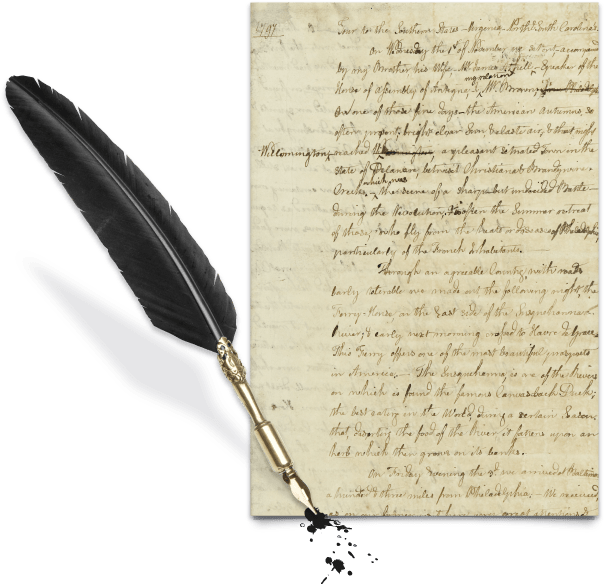The Quasi-War, 'Undeclared War with France', or 'Pirate Wars' — as the naval conflict is variously known — grew from tensions between the United States and France which escalated between 1798 and 1800.
Henrietta emphasises her astonishment at the rapid political changes in the United States, wondering whether a 'Magic-art must have worked it.'
Due to diplomatic business necessitated by changes in the United States' neutrality and allegiances, the Listons stayed, at least for a while, in Philadelphia, so that Robert could attend to his work. They remained despite the city emptying of 'inhabitants of all ranks' — yellow fever had broken out.
Eventually, on the 23 August the Listons left Philadelphia for New York, exploring the areas of Flatbush and Utrecht on Long Island in what is now Brooklyn. They then proceeded through Connecticut to Boston, passing members of the Mohegan Tribe of Connecticut. In this journal Henrietta often draws comparisons between the eastern and the southern states, but also between the 'old country' and this 'new' country
Yellow fever epidemics
In 1796 the Listons, like many people, had gone to Germantown, a village less than 10 miles from Philadelphia to escape the threat of the 'contageon'. In 1798, however, they stayed for a time in their house on Arch Street near Sixth Street, one of the 'principal streets in Town'. Yet no-one from the Listons household caught the disease.
Dr Benjamin Rush, a friend of the Listons, was a key figure in investigating the causes and treatments of yellow fever and published on the subject. During the first epidemic in Philadelphia in 1793, Rush had stayed in the city, treating a great many patients.
The quarantine imposed on visitors entering cities changed the route the Listons took to Boston. Henrietta mentions the panic attending the yellow fever epidemic in 1793.

